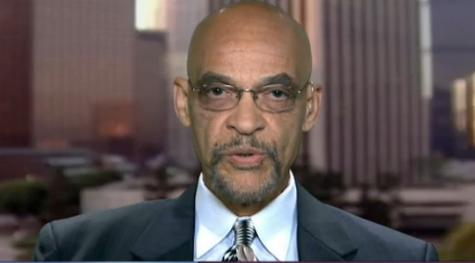Earl Ofari Hutchinson
“I can’t get tested!” That was my incredulous response when my primary care doctor at a major medical facility in Los Angeles said I couldn’t get a COVID test. I was quickly informed that there were no tests readily available at that time. And those that would be given were only given with a doctor’s recommendation and only to those at the highest medical risk. This wasn’t all. The test, she said, if approved would then have to be ordered. How much time would that take? A shrug.
The instant the COVID-19 crisis hit, the great fear was that African Americans would be last in line, if at all, to get tested. The fear wasn’t unfounded for very good reasons. There’s the ugly history of the stupendous chronic neglect of the health needs of Blacks, especially the Black poor. Countless studies have shown the gaping racial disparities in availability and affordability of medical testing and screening.
There’s the equally well-documented history of the implicit bias of many medical practitioners and doctors toward African American patients. That is their willingness to ignore or downplay the symptoms and treatment of illnesses among African American patients. Blacks have been by far the greatest at risk from every major health threat. The list of these conditions can fill out a medical textbook. There is a direct cause and effect between the astronomical disparities in illness and death from these afflictions and the lack of proper screening and testing availability and affordability.
COVID-19 presented special challenges to poor, Black communities. The first challenge is one that the general public faced. That is when would the tests be available? The message from Trump, medical professionals, and the CDC and just about anyone else with knowledge of tests and the procedures, was confused, mixed, and even contradictory. The bottom line was that there would be a big lag time when the tests would be widely available.
The next challenge was when the tests were available where would they be available. The message on this was mixed, with much uncertainly about the priorities of who would be tested. The press reports that high profile celebs such as Tom Hanks, Idris Alba, NBA and NFL players and coaches, and Congressman Rand Paul, and even convicted rapist Harvey Weinstein got tested with no delay heightened suspicions that there was indeed a pecking order for testing. The rich, famous, and influential seemingly would be at the front of the line in the testing.
There was the cost. Trump and Congress seemingly took that concern off the table when the emergency stimulus package to combat the crisis promised that the government would foot the bill to ensure that testing would be free. But even testing at no cost meant little if testing wasn’t readily available and accessible. The initial numbers where testing was available weren’t promising. Vice President Mike Pence with much fanfare noted that a half million had been tested after three weeks. This was barely a blip on the chart. Many public and health officials almost resigned themselves to the fact that testing would be severely limited and that the only recourse for people even if they had the symptoms was to self-quarantine at home during the 1 to 14-day incubation period.
This didn’t address the question of who would get the tests. The great danger in shortchanging testing among the most vulnerable group in the population to illness, Blacks, is that the absence of testing could have disastrous health consequences for the general population. Disease and afflictions can’t be walled off among one group. There is too much interaction across the population lines for that.
Prompt testing of Blacks and lower- income groups that have greater susceptibility because of poverty, poor nutrition, and lack of access to health care facilities and treatment greatly increase the danger to the general population. It also does not allow doctors and medical researchers to collect the data to determine if and whether what types of preventive and public health safeguards can and need to be put in place to prevent further spread of the infection.
Some medical institutions such as John Hopkins recognize the need for accurate information on who is at greatest risk from COVID-19. However, the studies have been done almost exclusively based on gender, age, and to an extent location, but not race. This is a blind spot that desperately begs to be corrected. In the two cities, Los Angeles and New York City, with majority minority populations, residents will only be tested if a doctor recommends testing. What, though, if there is no doctor and or nearby treatment facility to get that doctor’s recommendation for testing?
This is the Catch 22 for most Blacks, including those who do exhibit symptoms and are aged and have chronic medical preconditions that tag them among the most at risk of infection.
As the number of reported COVID cases and the death toll climbs, the pressure will mount for expanded testing to determine who has the infection and its potential health effect on all. The testing will be ramped up. But more tests still won’t answer whether Blacks will be at the front of the line for that testing. That ‘s a question that all have a vital stake in making sure is the case.
Earl Ofari Hutchinson is an author and political analyst. He is the author of What’s Right and Wrong with the Electoral College: (Middle Passage Press) He is an associate editor of New America Media. He is a weekly co-host of the Al Sharpton Show on Radio One. He is the host of the weekly Hutchinson Report on KPFK 90.7 FM Los Angeles and the Pacifica Network


REGULATE! The Man! This is a very enlightening article. It is written! You are in here!